- There are four main types of dental filling materials: composite, amalgam, gold, and porcelain.
- Gold and porcelain fillings are custom-made, biocompatible, and durable. Composite and amalgam fillings are less expensive.
- Temporary fillings can be placed in the office while waiting for other procedures. For emergencies, you can use DIY kits for cavities.
Tooth pain? Use Authority Dental to schedule a same-day emergency dental treatment. It's fast, easy, and reliable.
What kind of dental filling should you choose? Here's everything you need to know.
Composite filling
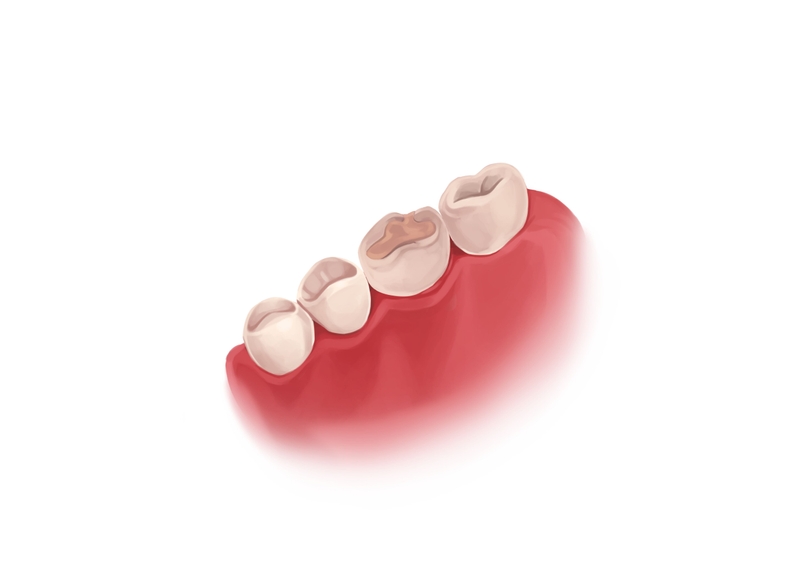
Picture by Authority Dental under CC 2.0 license
Composite fillings can match the color of the tooth almost perfectly. They give great aesthetics and don’t stand out at all. Composite is recommended for all sizes of cavities and does well on front teeth.
This permanent tooth filling is cheaper than porcelain and gold but more expensive than amalgam. Chair time is about 20 minutes. Composites can last for at least 5 years and are the most popular material for cavity fillings.

Harry Lee stresses "However, I caution patients that composite fillings are more technique-sensitive; they demand a completely dry environment to bond properly. If the cavity is deep or the tooth is highly susceptible to moisture, I still believe amalgam has its place, particularly in back molars for patients with heavy bites or limited dexterity in home care."
"Amalgam is highly durable, inexpensive, and incredibly forgiving of moisture, lasting 10 to 15 years," he adds.
Amalgam filling
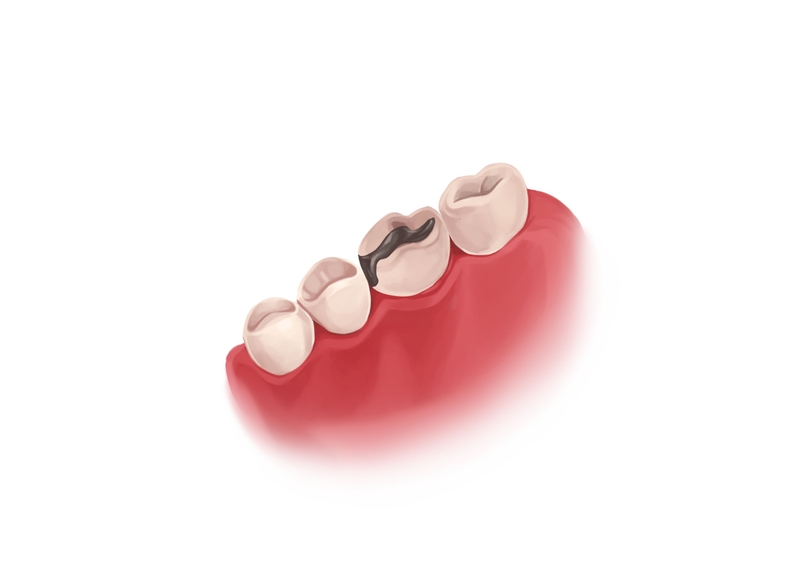
Picture by Authority Dental under CC 2.0 license
Amalgam is the cheapest dental filling material. The benefits include good durability and flexibility. These fillings can last 10-15 years. What’s more, they are very quick to place and won’t break or crack due to temperature changes.
The downside is aesthetics. Amalgam fillings are dark in color and can even discolor the surrounding tooth structure. More of the tooth has to be drilled away, too. There is also a small percentage of people who might be allergic to amalgam.
This material is recommended for posterior tooth restoration. It is quite flexible and doesn’t crack or burst with temperature changes.
Gold filling
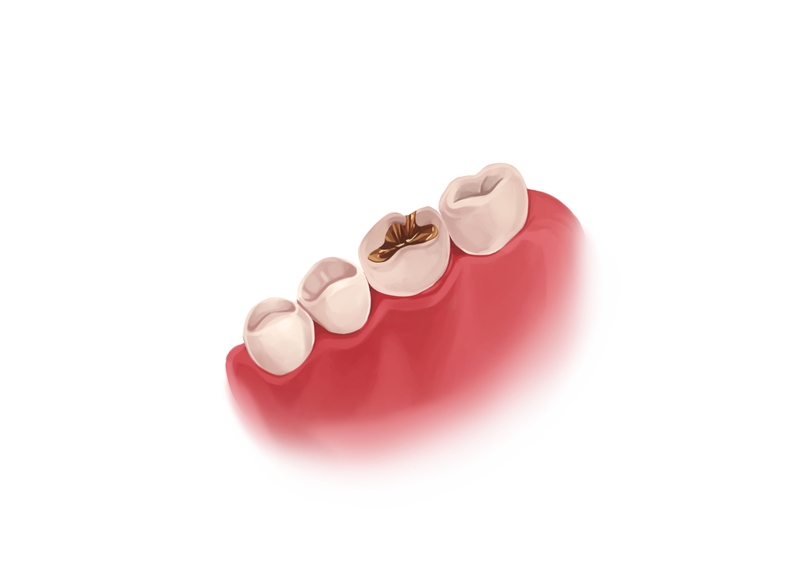
Picture by Authority Dental under CC 2.0 license
In order to have a gold filling fitted, the patient has to come in for at least two appointments. The fillings are custom-made and need a dental cast done beforehand. Gold is biocompatible and durable. It can last over 20 years.
Gold is visible in the mouth. It can’t be said, however, that it gives poor aesthetics, as some may like the way it looks. Either way, these fillings are usually meant for small cavities.
There is a slight risk of a galvanic shock, a small electrical discharge, if a patient has more than one metal filling.
Porcelain filling
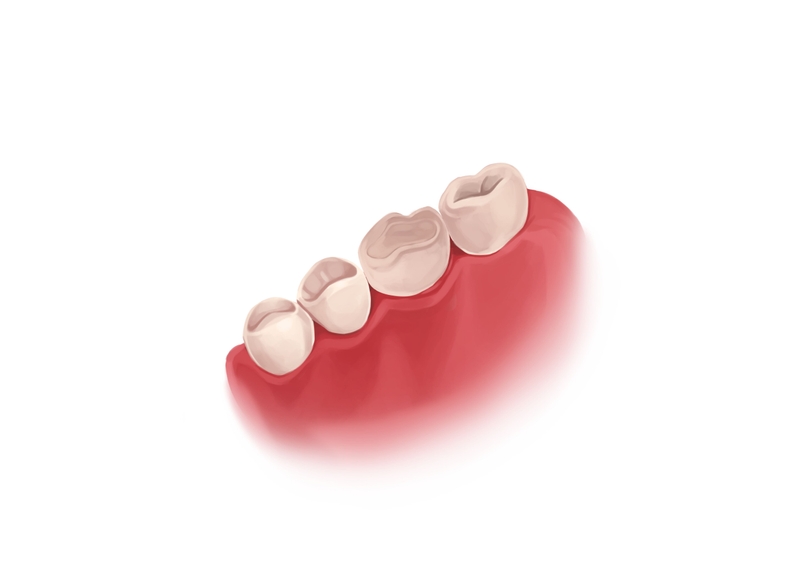
Picture by Authority Dental under CC 2.0 license
Fillings made from porcelain require a cast as well. The inlay is made in a lab, perfectly fitted to the remaining tooth structure. Porcelain matches the color of surrounding teeth.
Even though these inlays are expensive, they almost never have to be replaced. Porcelain fillings are extremely strong and durable. They usually work properly for 10-15 years, but with proper care, they can last even up to a lifetime. Porcelain inlays may end up costing you about the same as multiple composite fillings over time.
This type is most commonly used for back teeth with large cavities.

Temporary tooth filling
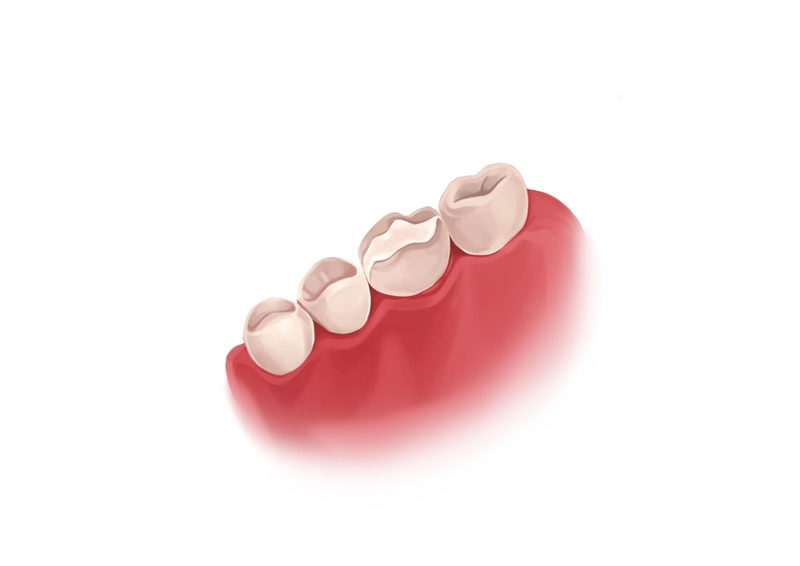
Picture by Authority Dental under CC 2.0 license
Temporary fillings can be fitted in the office. They are usually placed when patients are awaiting further procedures. Gold and porcelain inlays are a good example. A temporary filling will be put in between appointments, while the permanent one is being made at the lab.
Another situation that may require this type is when you’re waiting for a crown or when undergoing multiple root canals. If there is no possibility of fitting a composite or amalgam, the tooth can’t stay empty. Your dentist may take you in to relieve pain and schedule you for another procedure later on.
There are also cavity DIY kits that you can purchase online and do from home. A tooth filling kit, however, will never be a long-term restoration. A homemade temporary tooth filling is meant to be used in emergencies when you don’t have access to a dentist. Sooner or later, a professional will have to remove it and place a proper one.
What is the procedure of a dental filling?
Dental fillings are one of the most common procedures in the dental office. The visit may take about an hour.
Diagnostic procedures
X-rays are a common preparatory procedure. Radiographs show the dental professional how much of the tooth has to be removed if there is a cavity.
Anesthesia
The dentist will begin by numbing your mouth. A topical gel may be used on your gums to make an injection more bearable. A local anesthetic is the most common type for cavity fillings. This way, you won’t feel any pain during the procedure.
Removing damaged material
A small drill removes decayed parts of the tooth. You will feel some pressure, but if you don’t fidget too much, this stage may only take a few minutes.
Filling
Once all the damaged material is removed, it’s time to fill in the hole. A UV lamp may be used to harden the material. You might have to wear eye protection.
Polish
The last step is evening out the surface of the tooth. You won’t feel pain, and this step is less uncomfortable than the initial drilling. The dentist may ask you to bite gently or run your tongue over the dentition to make sure your bite isn’t altered and that everything is smooth.
FAQ
How long does a cavity filling take?
How many cavities can be filled at once?
Do cavity fillings hurt?
Can you get a cavity filled while pregnant?
When to replace a cavity filling?
If your filling needs to be replaced, your dentist will let you know during a bi-yearly checkup. That is why it is so important not to miss those. Signs you can look for yourself include pain and discoloration. It will obviously also be necessary if the tooth filling falls out.
Generally, composite fillings may last around 5 years, while other types last up to 15 years. If you suffer from bruxism, a replacement may be needed more often.
How to get rid of a cavity without a filling?
Once a cavity forms, you need to get it treated. No alternative remedy is recommended by professionals. Neglecting a cavity can lead to more serious complications, and you may at some point need root canal treatment or even extraction.
Harry Lee, DMD
When a patient has a cavity, the decision isn't just about patching a hole; it's about choosing the right material for that specific job. In my practice, the default choice is almost always composite resin (tooth-colored filling). The technology has advanced so much that modern composites are strong, highly aesthetic, and bond directly to the tooth, requiring less drilling than the older silver amalgam. I stress the importance of this conservation—we only remove the decay, preserving more of the healthy tooth structure.